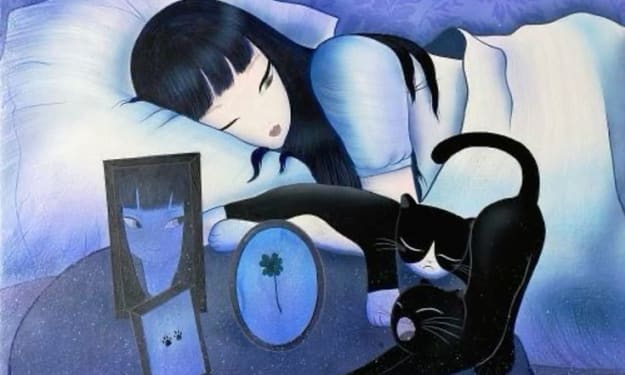The Allure of Lipstick: A Comprehensive Guide to the Iconic Cosmetic
Lipstick

Lipstick: the very word evokes aesthetic sensations and memories. Ordinarily, just a few strokes with a tube or stick are all that’s needed to add colour and presence to your lips. Simple, but effective. Over centuries, those strokes have become intertwined with cultural histories, socio-political movements and personal psycho-emotional processes. In what follows, I build a profile of lipstick under the three overarching themes of the Oxford Handbook of the Psychology of Beauty. My construct begins with the ancient origin, evolving cultures, and specific ingredients of lipstick. Next, I explore its application techniques, both general and specific. Finally, the impact of lipstick is examined from the standpoint of fashion and cultural motivations. My hope is that this all-encompassing ‘mini-manual’ of lipstick will be useful, enjoyable and, above all, instructive.
Click HERE to see the origin and evolution of lipstick
Lipstick can be traced all the way back to Mesopotamian civilisation, making it one of the oldest cosmetics. Men and women decorated their mouths with pigments created from fruits, plants and insects. Egyptians used lipstick, which consisted of a mixture of red clay, iron oxide, seaweed and animal fats. Lip colour popular among ancient Greeks and Romans was a variety of red made from crushed mulberries and carmine.
Its use waned during the Middle Ages when it was associated with paganism but re-emerged during the Renaissance, worn by princesses and queens such as Queen Elizabeth I of England, whose told-on-the-lips colour is often cited as the origin for the world-famous ‘British racehorse red’. In the 19th century, lipstick manifested as tinted balms or pomades, often placed in small earthenware pots or lead tubes.
Lipstick in the form it takes today originated in the early decades of the 20th century. An August 1912 advert for Stern’s Lipstick from the Los Angeles Times, 28 September 1912. The cosmetics pioneers Maurice Levy, for example, patented the first metal tube for lipstick in 1915. Colours were expanded by the introduction of synthetic dyes and, through this process of experimentation, lipstick became commercialised and mass-produced.
Discover the secrets of lipstick ingredients by clicking HERE
Modern lipsticks are crafted from a blend of waxes, oils, pigments and emollients. The key elements include;
Waxes (, like beeswax or carnauba wax); These give structure and firmness to the lipstick ensuring it retains its form.
Oils (such as castor oil, lanolin or jojoba oil); Oils help to hydrate the lips and provide a silky feel to the lipstick.
Pigments; They determine the color of the lipstick. Can range from minerals to artificial dyes.
Emollients (like shea butter or cocoa butter); Emollients moisturize and soften the lips improving comfort and wearability.
Tips for Application;
Applying lipstick is an art in itself with various methods to achieve results. Here are some basic steps for flawless lipstick application;
1. Prep your lips; Begin by exfoliating your lips to remove any skin then apply a nourishing lip balm for a base.
2. Define your lips; Use a lip liner that matches your lipstick shade to outline your lips and prevent bleeding.
3. Fill in your lips; Apply the lipstick from the tube or use a lip brush, for precision. Start from the center of your lips. Move outward for coverage.
Blot and then apply again; Gently dab a tissue on your lips to get rid of any product and then put on another coat for a vibrant color that lasts longer.
Neaten the edges; Grab a concealer or foundation brush to clean up any smudges or crooked lines, around your lips for a refined look.
Application Techniques:
The application of lipstick is an artistic in itself, with different techniques resulting to varied effects. The following are some few basic steps for perfect appearance of the lips.
Lip preparation: Begin by scrubbing the lips with a scrubber in order to remove any dead skin, and follow it up with a moisturizing lip balm that will create a smooth base.
Define your lips: Employ a lip pencil having the same color as the lipstick to give your lips their sharp shape and stop them from smudging.
Fill in your lips: Spread lipstick over the mouth directly via its tube or through application using a brush. Commence at the middle and go outwards so as to have uniform coverage all through.
Blot and reapply: Pat down on tissues to get rid of excessive amounts of lipstick from your lips, then add another coat for more color intensity thereby extending its lifespan.
Correct mistakes around mouth’s edges: Use either of them, i.e. concealer or foundation brush in cases where you do not need untidy lines or smudges on your lips.
Impact on Fashion and Culture:
Rather, the application of lipstick goes beyond makeup enhancement. It is a mark of self-expression, confidence, and empowerment in women. Lipstick has been associated with femininity, sensuality as well as rebellion throughout time. From the iconic shades that Hollywood starlets wear to the bold red lips of Marilyn Monroe; beauty standards have been influenced by lipstick.
Lipstick still remains a basic accessory in make-up routines across the world today. Besides being used for enhancing appearance, it is also understood in terms of self-care and self-expression. The beauty industry is constantly advancing through production of innovative formulations, finishes and shades that cater for different tastes, need ad preferences.
Conclusion:
Lipstick occupies an exceptional place within millions across the world-it is cherished worldwide. Its long history, varied compositions and transfiguring power make it a timeless beauty icon. Classic red, playful pink or any other statement shade you choose to go for; will be your way of telling others about yourself using one single action- applying lipstick at once






Comments
There are no comments for this story
Be the first to respond and start the conversation.